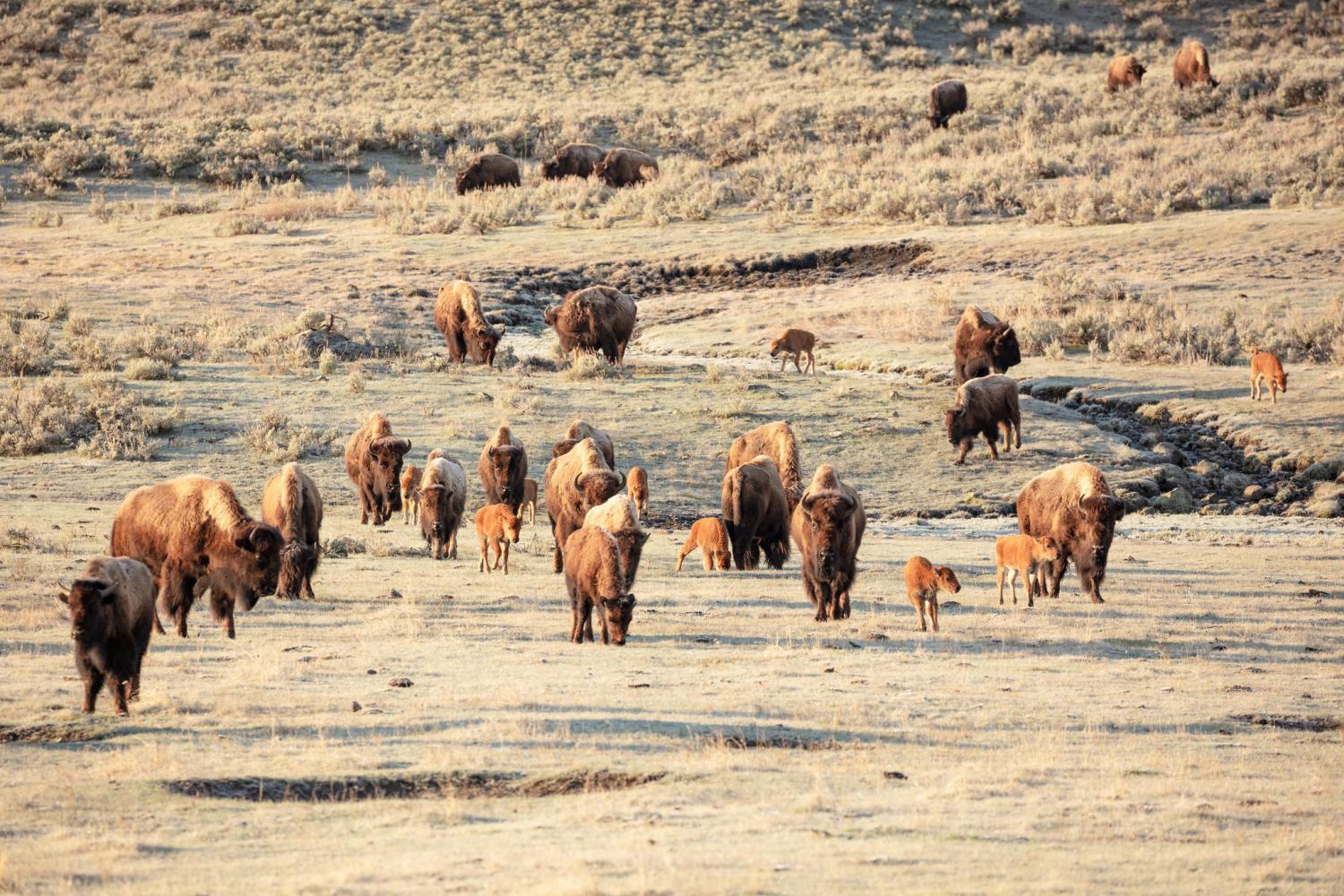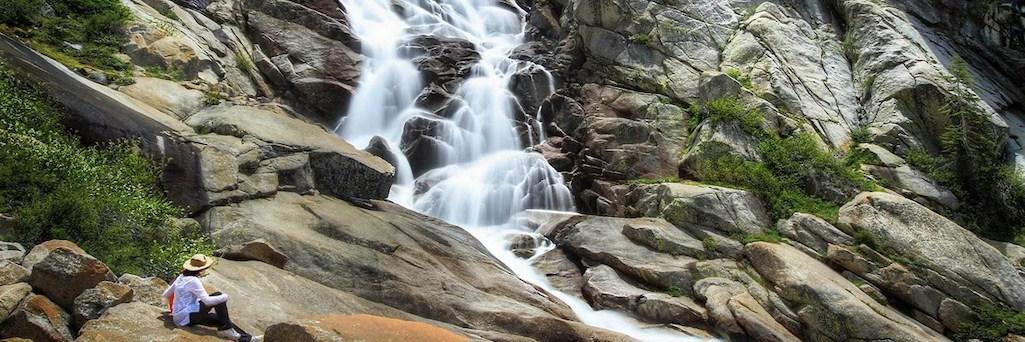
Yellowstone bison might look docile, but they're not to be trifled with/NPS file
A young Ohio woman was the first to find out this year just how dangerous it is to approach bison in Yellowstone National Park, though grumpy bison are not the only risks to avoid during your summer in the National Park System.
Each year hundreds of park visitors are injured, or worse, and many of those incidents could have been avoided with a healthy dose of caution. In the case of the 25-year-old Ohio woman, she actually walked to within 10 feet of a bison in Black Sand Basin in Yellowstone this past Monday. Two others also came within 25 yards of the shaggy, horned animal, despite park regulations that ask you to stay at least 25 yards (75 feet, 23 meters) away from bison.
"As the bison walked near a boardwalk at Black Sand Basin (just north of Old Faithful), the female, on the boardwalk, approached it. Consequently, the bison gored the woman and tossed her 10 feet into the air," a park release said.
Despite the obvious risk of an unpredictable wild animal weighing a ton or more, Yellowstone officials annually have to warn visitors that "[W]ildlife in Yellowstone National Park are wild and can be dangerous when approached. When an animal is near a campsite, trail, boardwalk, parking lot, or in a developed area, give it space. Stay more than 25 yards (23 meters) away from all large animals - bison, elk, bighorn sheep, deer, moose, and coyotes and at least 100 yards (91 meters) away from bears and wolves. If need be, turn around and go the other way to avoid interacting with a wild animal in close proximity."
The Ohio woman was taken by ambulance to an Idaho Falls, Idaho, hospital, where she was treated and released for her injuries.
Danger Near The Surf Line
Another wild animal to be aware of this summer are various species of sharks. Cape Cod National Seashore in Massachusetts comes to mind most often when shark attacks in the park system are mentioned. White sharks are drawn to the waters surrounding the national seashore by the grey seals that summer there.
Back in 2018 a 26-year-old Massachusetts man was enjoying the Atlantic at the national seashore, riding the waves on his boogie board, reportedly wearing a wetsuit and swim fins, no doubt kicking his legs from time to time in the water, and likely laughing from the joy of riding waves. What he didn't see was a shark cruising along the Newcomb Hollow Beach, one that attacked, inflicting tremendous bites that led to Arthur Medici's death despite efforts by many on the shore to save him.
Officials from the national seashore and surrounding towns have worked hard to inform the summering crowds of the dangers of sharks and there have been no more fatal shark attacks. Take the time to check out the park's literature on how to have a safe beach vacation.
Sharks also are among the resident wildlife at Cape Hatteras National Seashore on the Outer Banks of North Carolina. Though attacks are few and far between, it never hurts to check with the rangers or the staff at the visitor center about precautions you should take.
Raging Waters To Avoid
Talk about surf at a national seashore or national lakeshore and you need to be aware of rip currents. Get caught in a rip current and you're more than likely going to panic. The strong current of water pulling you out to sea can be overpowering.
Rip currents are powerful, channeled currents of water flowing away from shore. They typically extend from the shoreline, through the surf zone, and past the line of breaking waves. Rip currents can occur at any beach with breaking waves. If you find yourself caught in a rip current, float, don't fight.
Remain calm and swim across the current (parallel to the shore), slowly working your way back to the beach at an angle. If you are still unable to reach the beach, draw attention to yourself by waving your arms and yelling for help.
In Western parks, while it surely will be hot this summer with high temps in the 90s and pushing 100 degrees, rivers, streams and waterfalls are enticing, but dangerous just the same.
Back in 2018 a 36-year-old Los Angeles man died when he was swept down the boulder-strewn Middle Fork of the Kaweah River in Sequoia National Park in early June of that year. “With rising area temperatures, rivers look very inviting. Please stay away as they are swift, cold, and dangerous,” Ranger Elizabeth Dietzen said at the time.

Tokopah Falls in Sequoia National Park is beautiful...and dangerous/NPS file
Visitors to Yosemite National Park have been killed when they ventured too close to the Merced River as it plunges out of the high country and down Nevada and then Vernal fall into the Yosemite Valley. Rocks along the river channel are wet and slippery, and the odds of surviving a fall into the raging waters are slim at best.
Of course, there are many other parts of the National Park System where you can be injured or worse if you don't pay attention. Deaths are reported from Capitol Reef National Park in Utah, Delaware Water Gap National Recreation Area along the New Jersey-Pennsylvania border, Pictured Rocks National Lakeshore in Michigan, along the cliffs of Acadia National Park and canyons of Zion National Park, at Mount Rainier National Park, Rocky Mountain National Park, and dozens of other spots in the park system.
This summer, appreciate the risks out in the parks.



Comments
"When the time comes for a man to look his maker in the eye, where better could the meeting be held than in the wilderness?"
-Dick Proeneke
Dick Proeneke died at his brother's home in California.
Not exactly "wilderness".
Good article.
Yes, A. Johnson, but Dick Proeneke was 86 years old at the time, and when you get that old, you need help from someone who may not be living (or wish to live) in the wilds of Lake Clark National Park and Preserve. Heaven knows, if I live to that ripe old age, I may have to live near relatives who don't have the same appreciation for the mountains that I do. Mr. Proeneke - who lived for almost 30 years in the wilds of Alaska, loved the wilderness and probably pined for it to his final days, regardless of where he was at the time of his death.
Thanks, Rebecca. I sympathize. I've lived nowhere the adventure that Dick Proeneke lived, but regardless when I die whether it be in a big city hospital or at home, my heart will be in the wilderness I've seen.
There is no power like water. I was in Yosemite the day after three men were swept over Nevada Falls and then Vernal Falls to their deaths in the valley below. It was mid-May, 2011, as I recall, and the rivers (and their falls) were draining the heaviest snow-pack seen in the Sierra for decades. The water was fast, and it was "heavy." I believe the three men were from Texas or perhaps Mexico. All were on the younger side, and all were educated. I recall that one of them was a college professor. Well, as I remember it, one man simply stuck his foot in the Merced, above Nevada falls, and down he went, helpless against the current. His traveling companion jumped in to render help. And then the third man jumped in to rescue the other two. All three died. Down below, the falls were so furious that many of the observation platforms could not be reached. The rivers were fast, and overran much of the parking.
https://www.nbcbayarea.com/news/local/hiker-swept-over-vernal-falls-repo...
This is actually what happened that day. Sadly water deaths are common in Yosemite.
The main reason you DO NOT want to go near a waterfall in Yosemite is that these waterfalls are POLISHED GRANITE! Its satin smooth. Unlike a normal river- there is no gravel or anything to get a grip on. If you go in near the lip of these waterfalls- where there is no gravel- you will go down them. And in the summer- when it seems safe since the water can be a trickle- their is a super slick moss that grows making the falls deadly even when nearly dry.